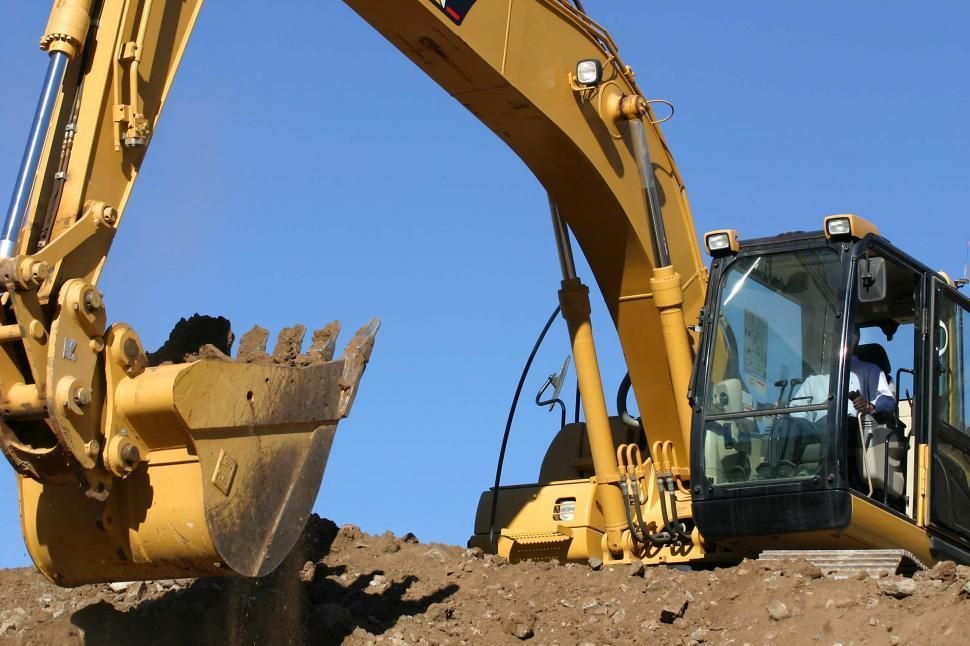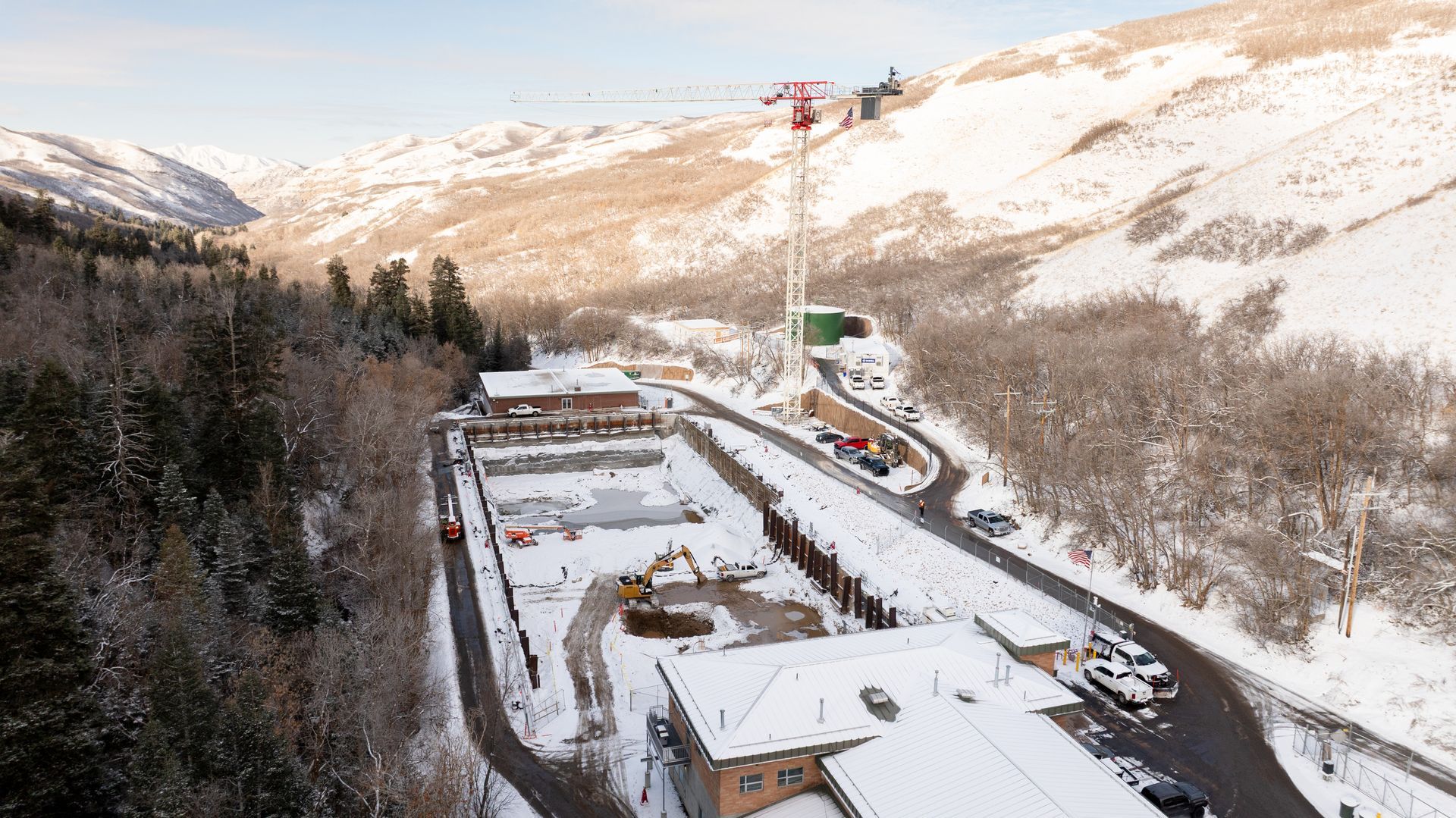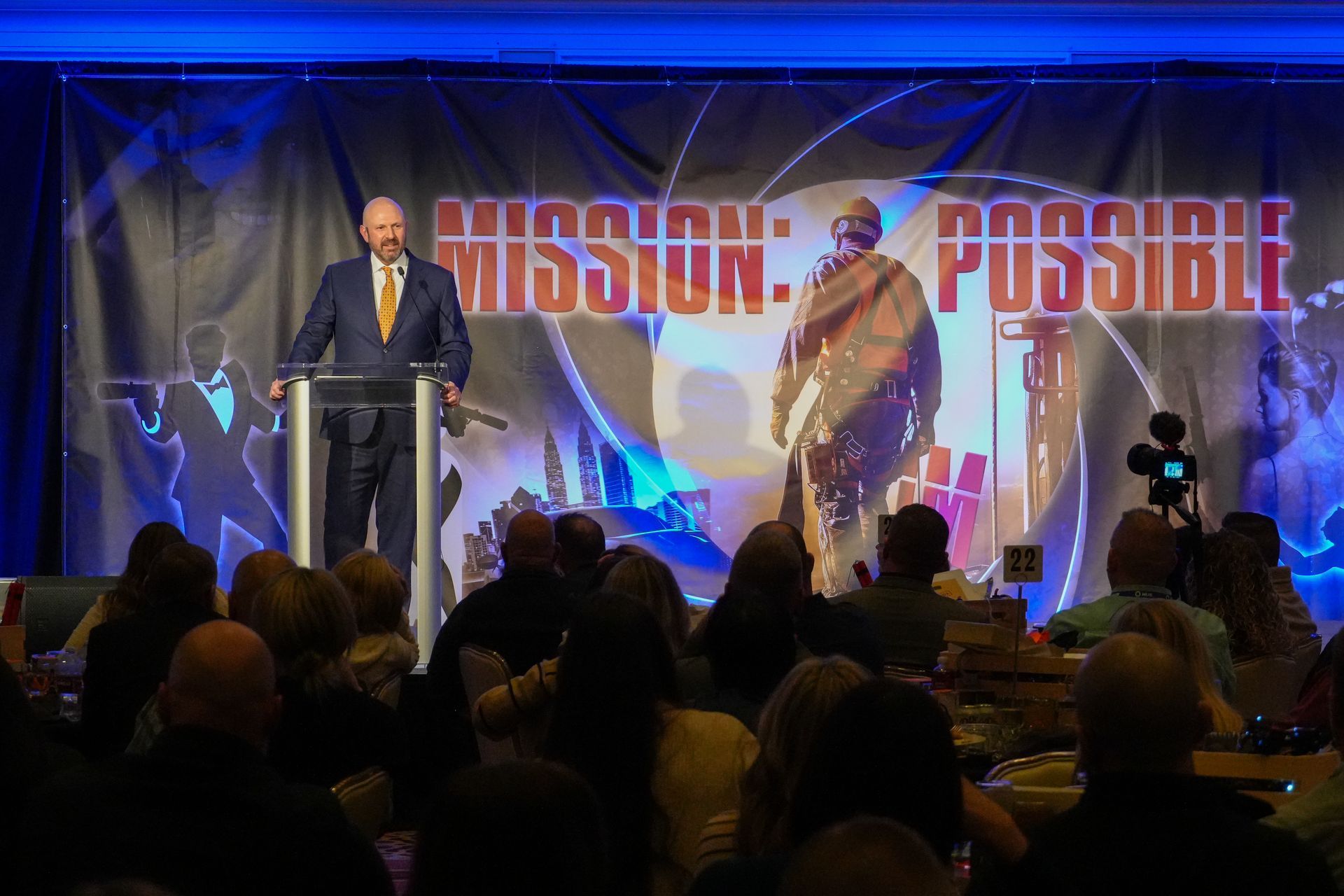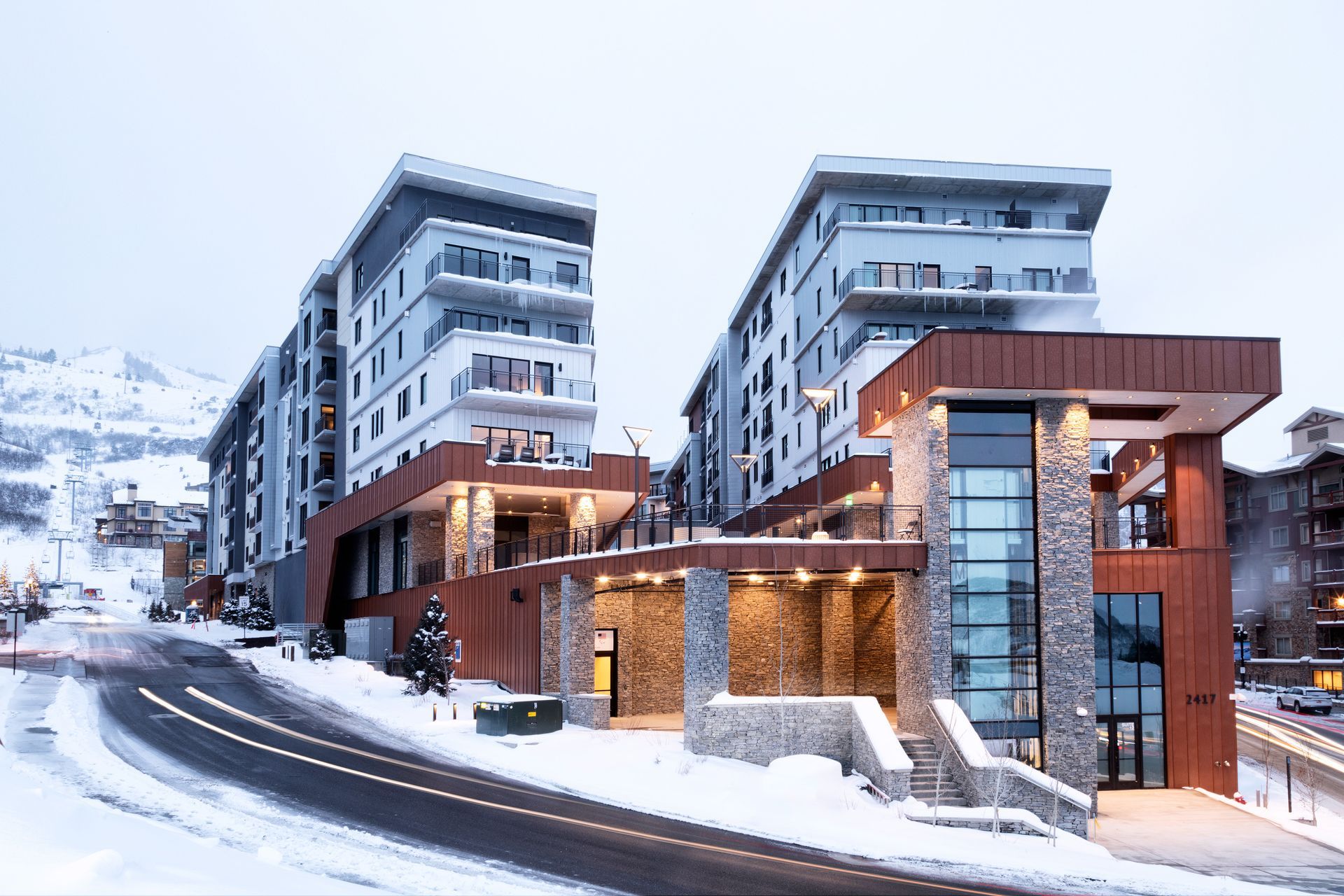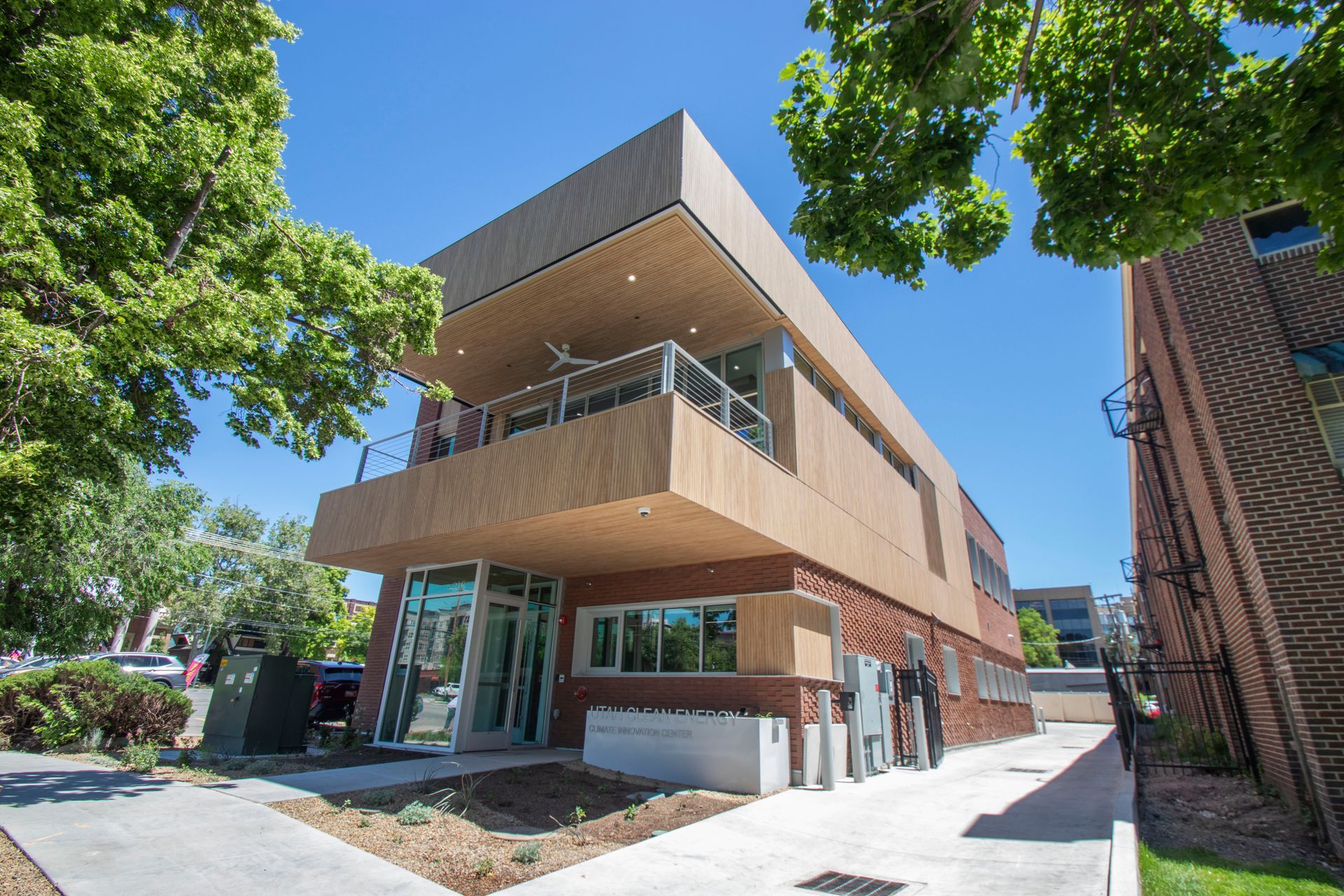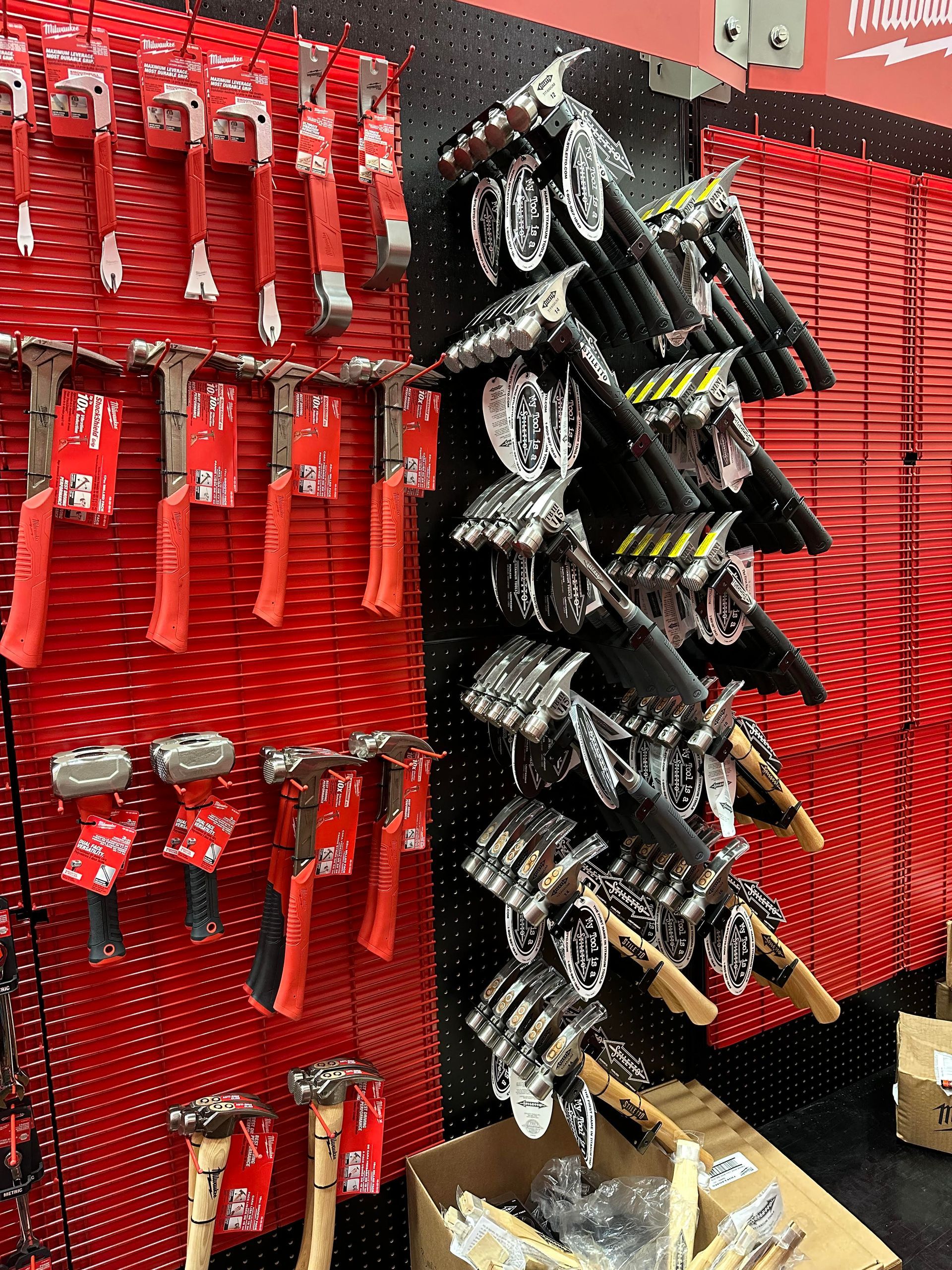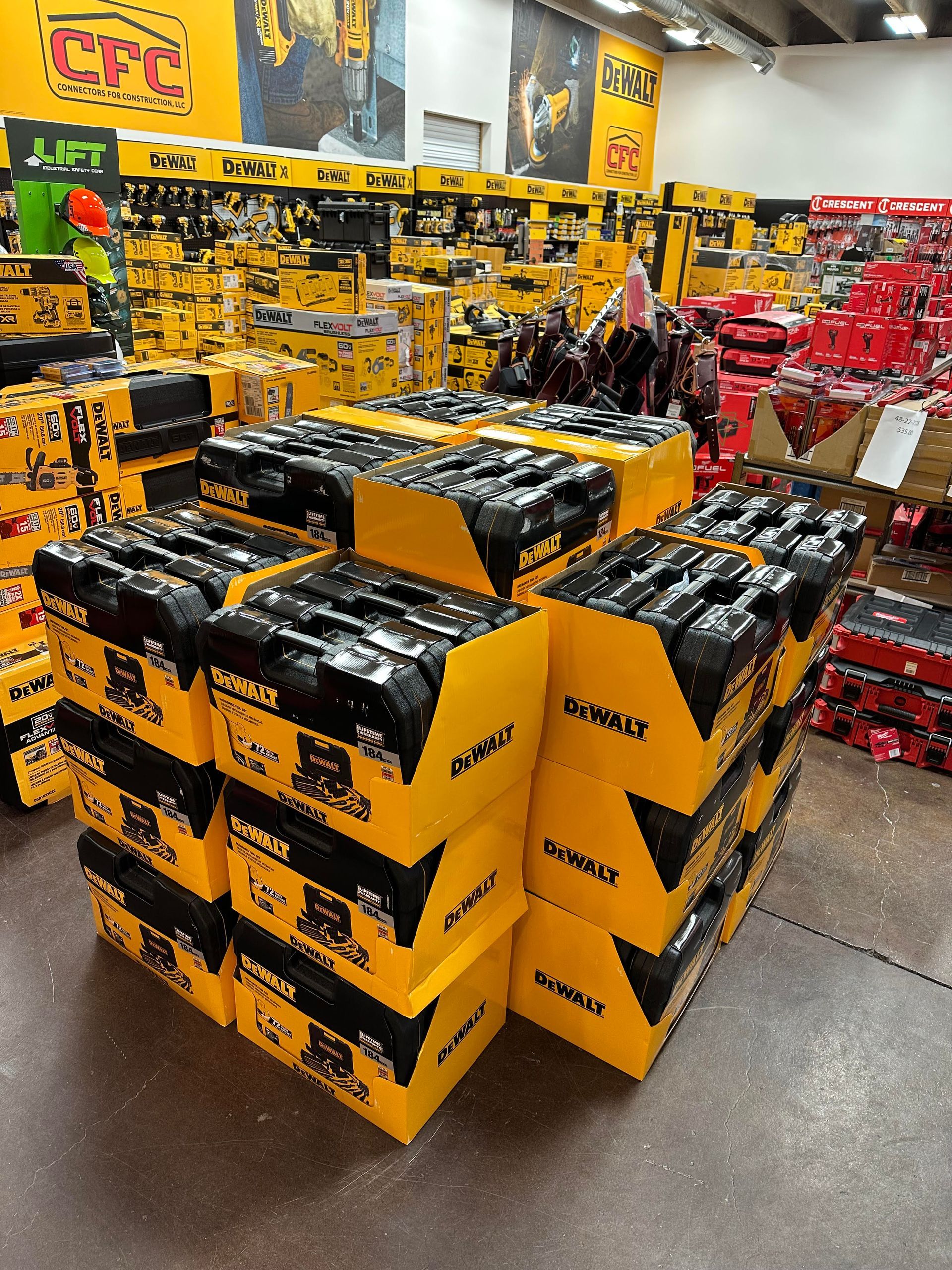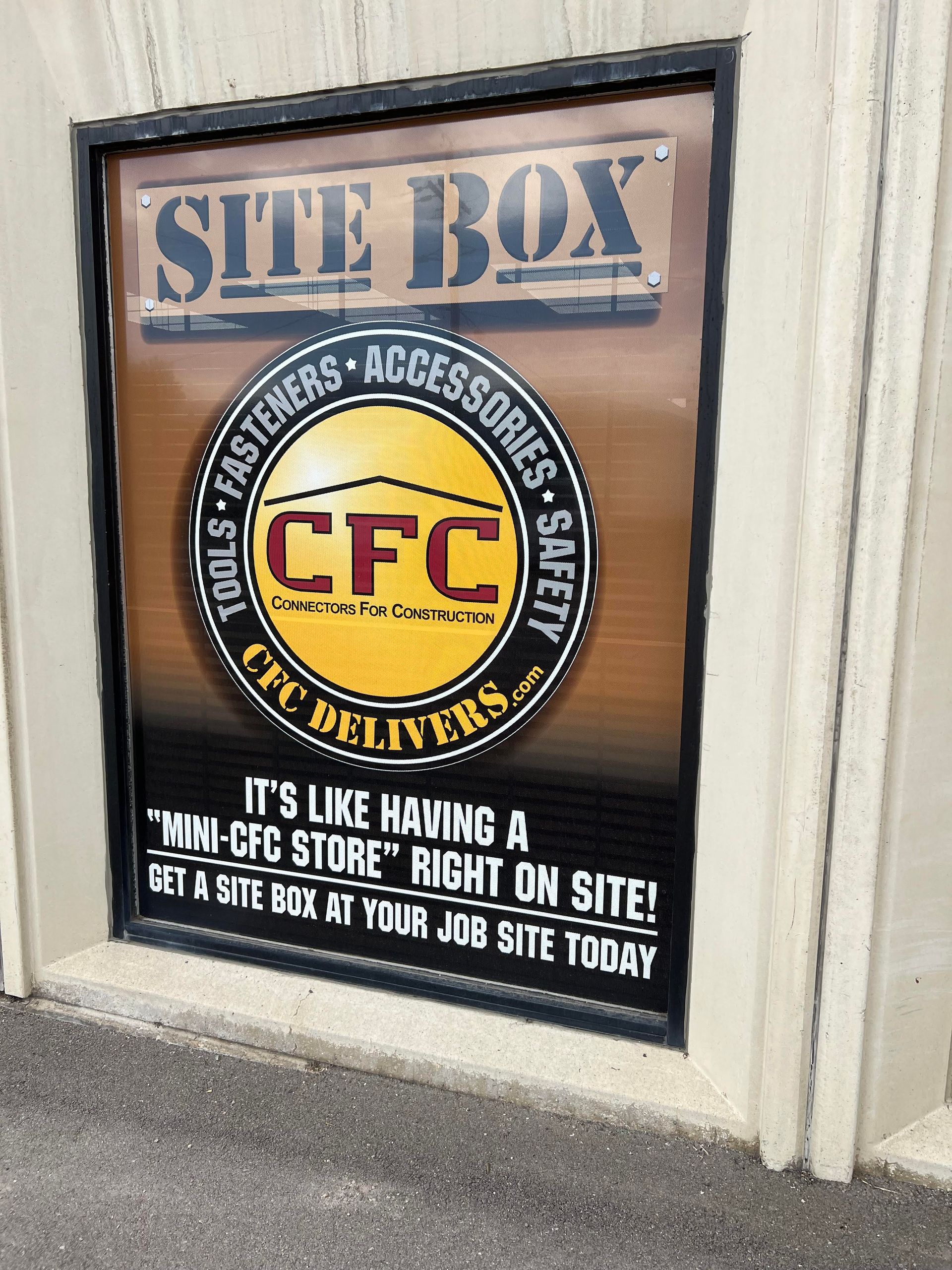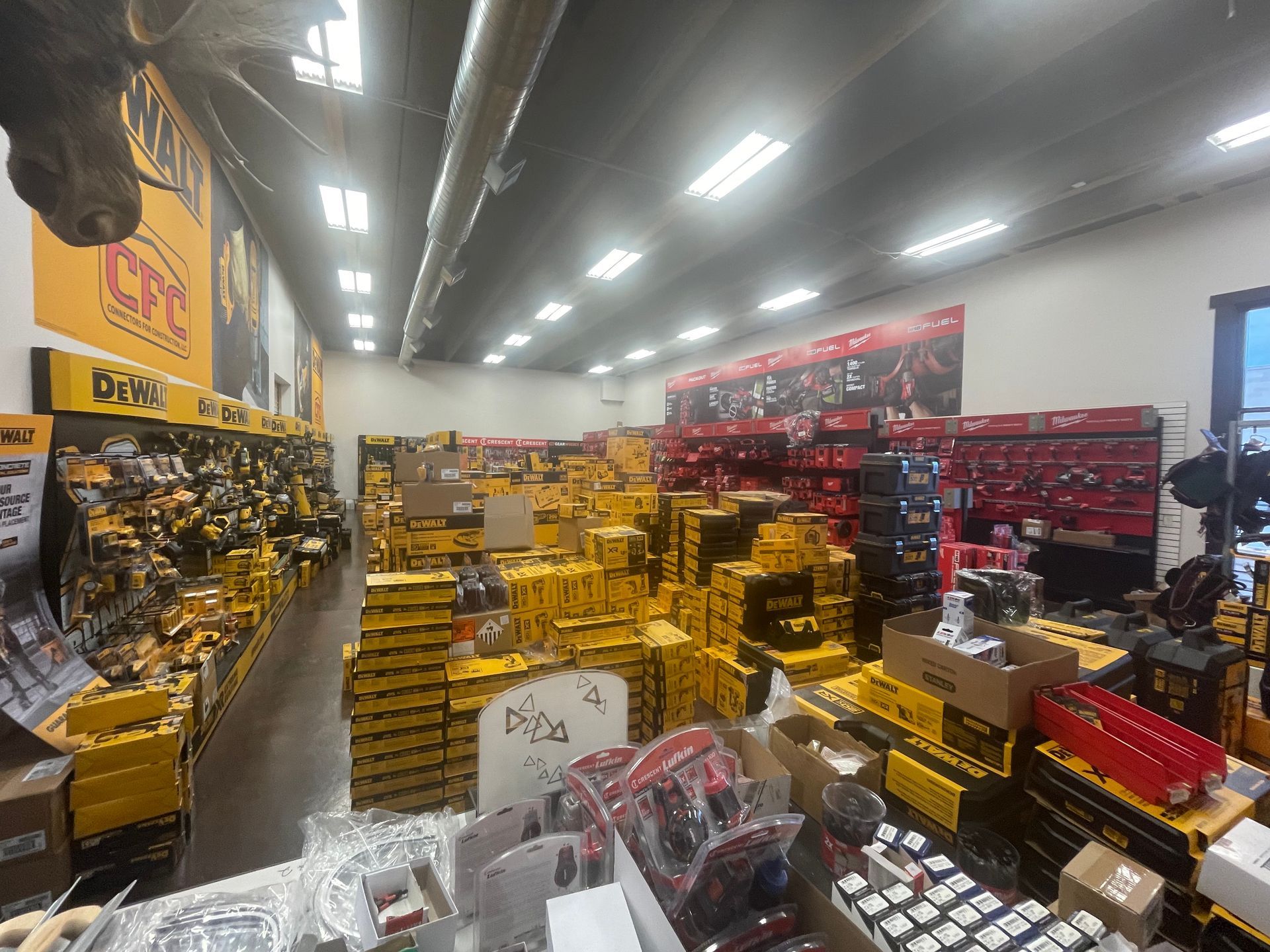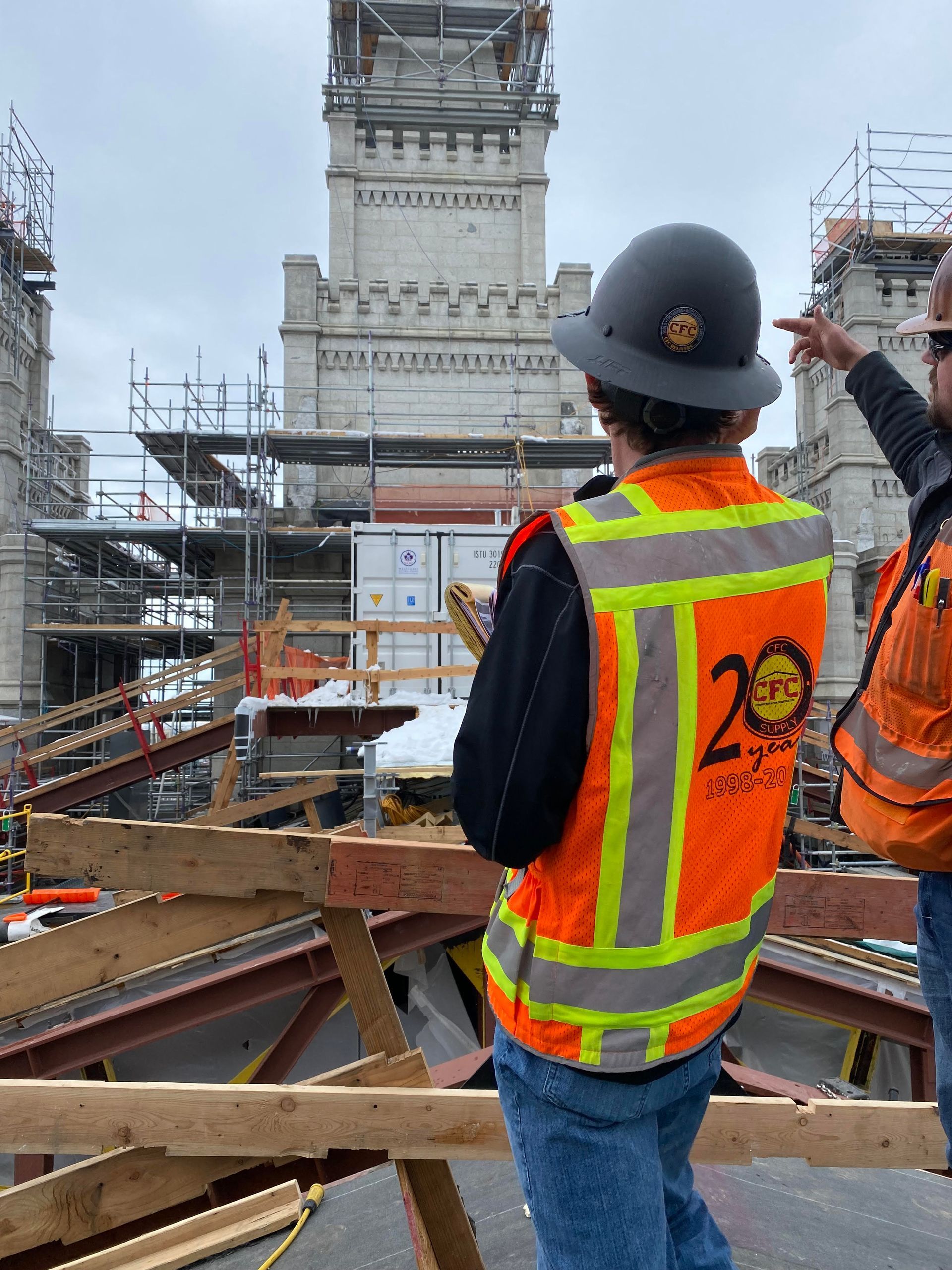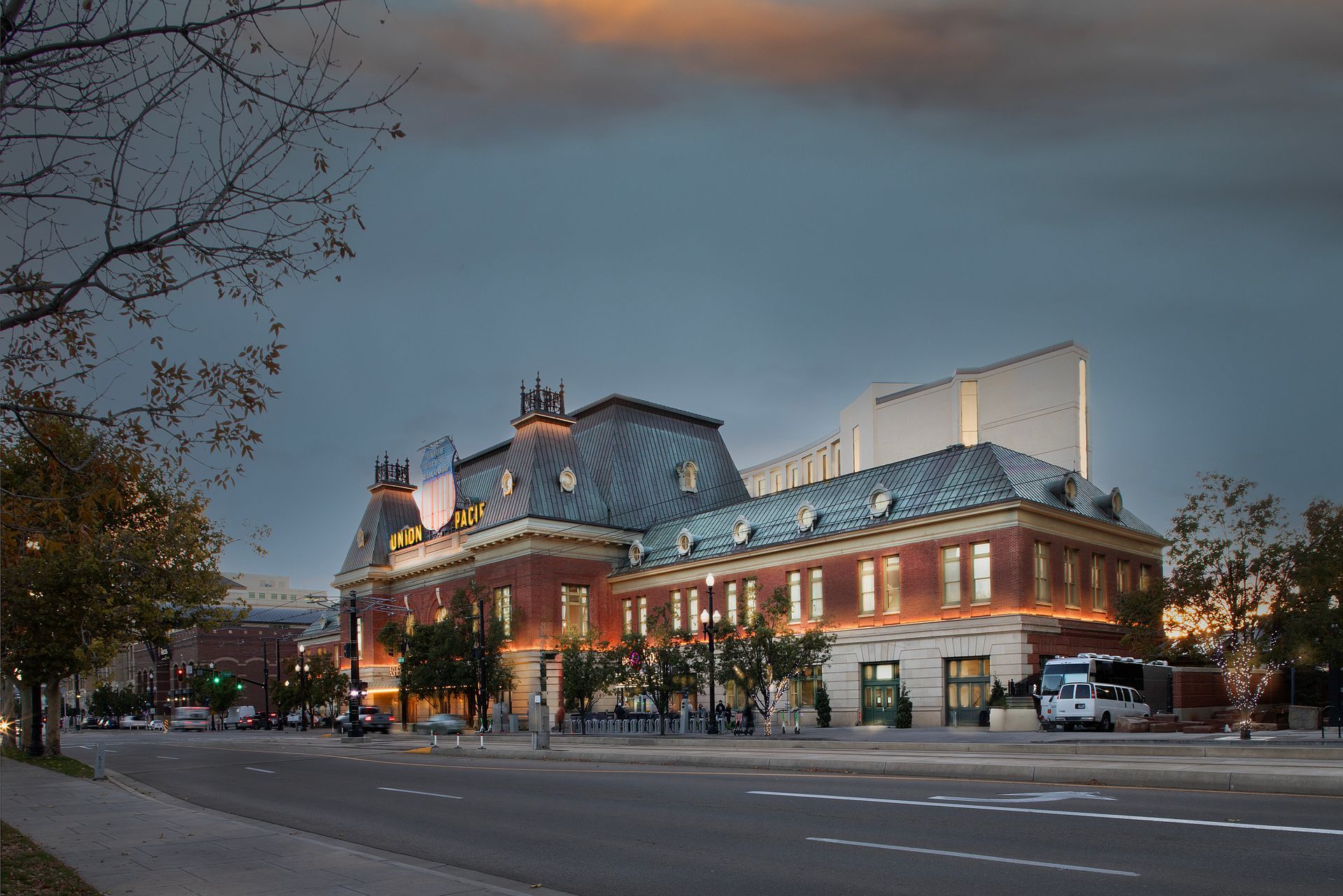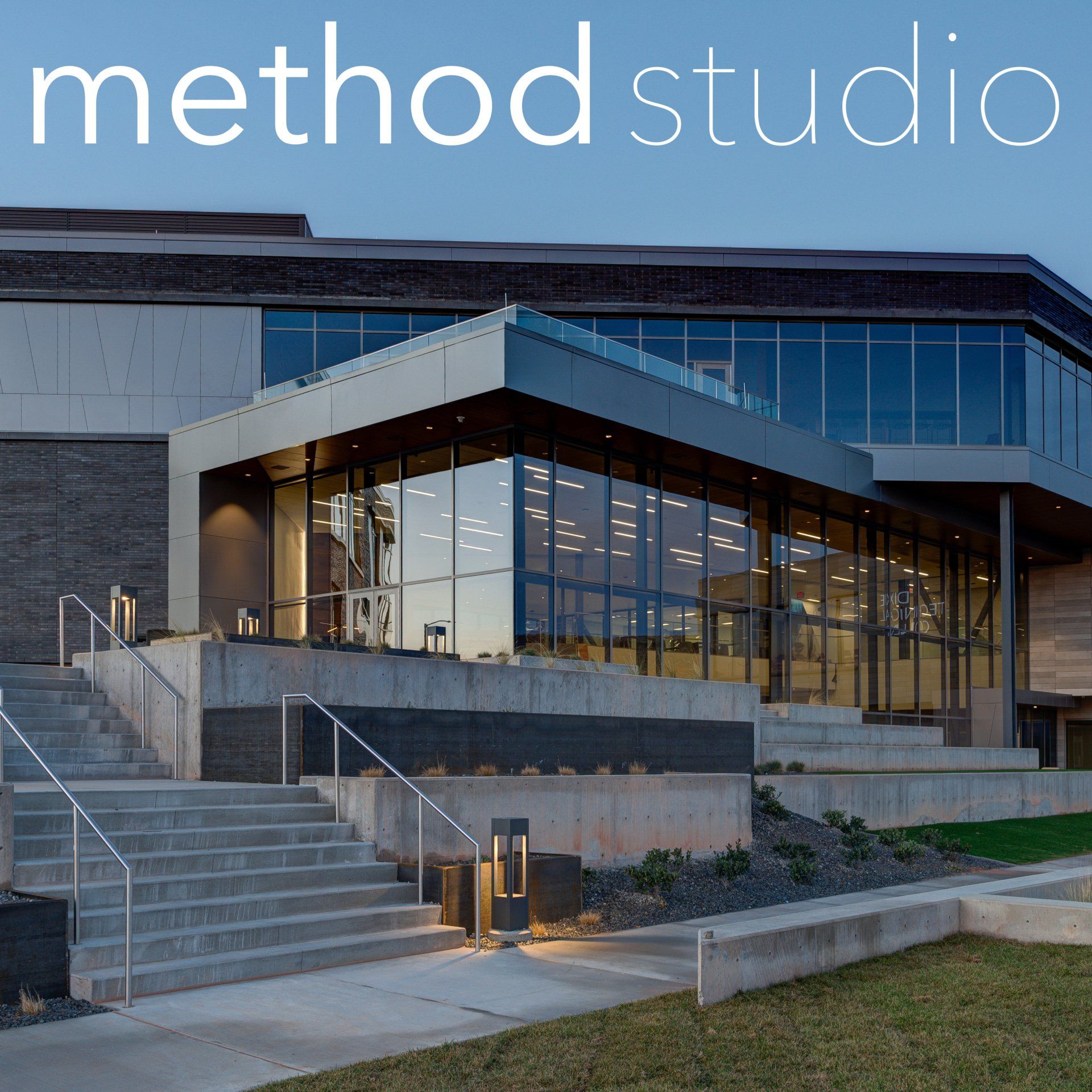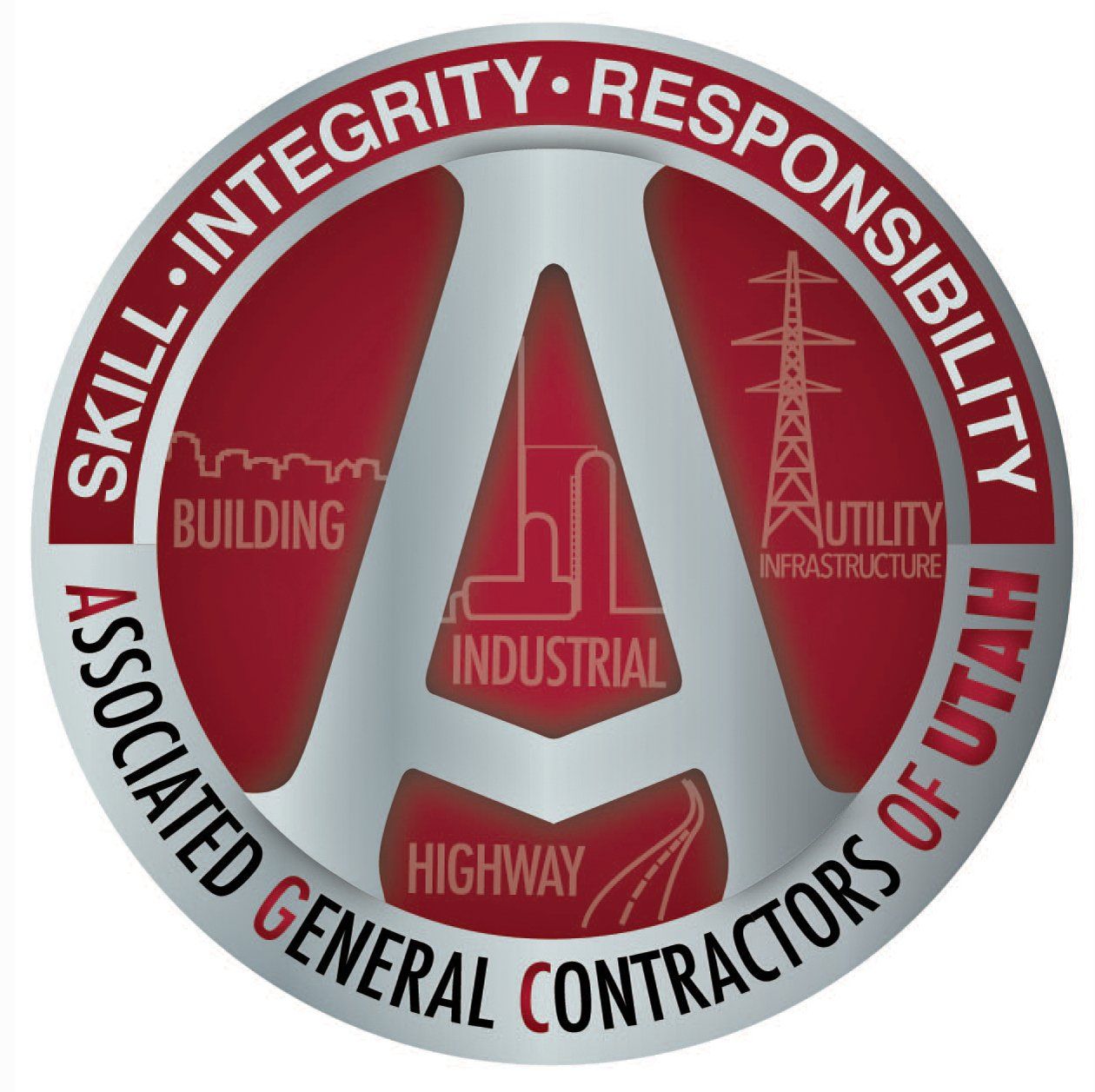Blake Larsen’s repurposing of the ‘Blue Banger Hanger’ 15 years ago helped family firm Connectors for Construction transition to the commercial construction market and reach great heights of success. By Brad Fullmer
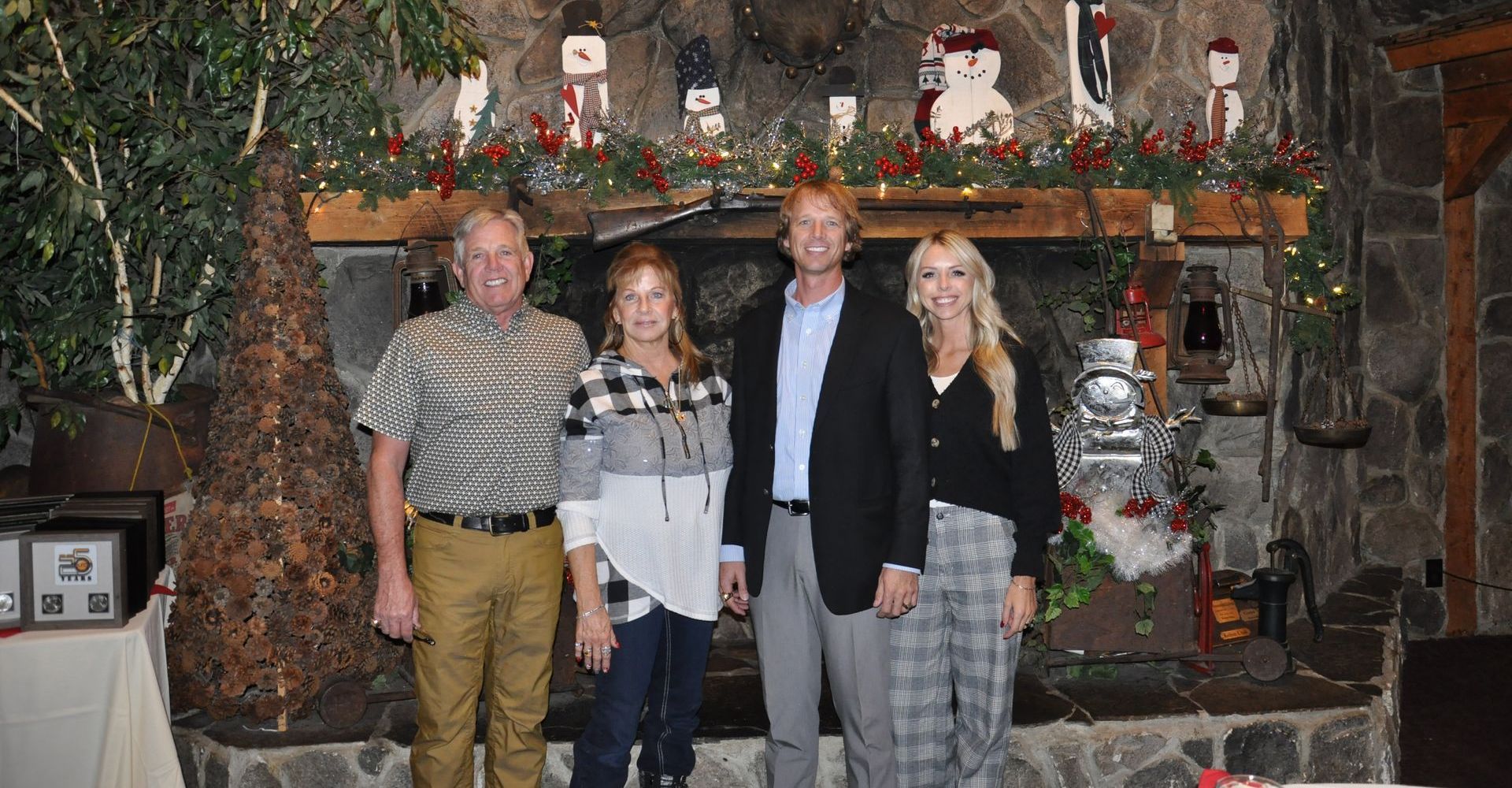
The great recession that struck in 2008—fueled by a collapse of the residential housing market—crippled many businesses within the A/E/C industry, leaving many scrambling to stay afloat and ride out the turbulent economy until better times came around 2-3 years later.
For Blake Larsen, President of Salt Lake-based Connectors for Construction (CFC) Supply, it signaled the beginning of a remarkable transition for the decade-old firm that was founded in 1998 by his parents, Gene and Sue Larsen—from a modest-sized company supplying connectors to primarily residential home builders into a premier commercial construction supplier with two Wasatch Front locations, 26 full-time employees, and an inventory pushing 80,000 products.
The way Larsen explained the transition—which happened virtually overnight right as the great recession was starting to take root—is almost something from a movie.
"Pre-2008 we were strictly a residential framing contractor supplier. When the recession hit because of the housing bubble, 75% of our customers vaporized in one week," Larsen recalled, rattling off a list of big-time clients that immediately shelved all homebuilding activity. "It was a challenging time; we weren't sure what was going to happen."
Larsen learned that some of his framing contractor clients quickly pivoted to the commercial market, primarily on projects associated with the bustling City Creek Mall development, which included The Regent, an exclusive 23-story, 150-unit condominium tower on the corner of West Temple and South Temple.
One of Larsen's friends, had been hired as a Project Engineer for Salt Lake-based Okland Construction, the general contractor on The Regent (dubbed 'Tower 1' at the time). His friend told Larsen that Okland was trying to improve the efficiency of its internal concrete pouring process on the job, specifically, trying to find a better way to keep large vertical column forming systems plumb.
Larsen scoured through various supply books and became intrigued with the potential of "blue banger hangers"—internally threaded inserts that are traditionally cast into the underside of a concrete deck after being fastened to the top of a wood form or metal deck. Once the concrete cures, the anchor provides an attachment point for threaded rod used to hang and seismically brace electrical, mechanical, and plumbing systems.
Larsen's idea was to cast the blue banger hangers into both the floors and ceilings of each concrete slab. That would allow subcontractors to utilize hangers cast in the ceilings for electrical and mechanical systems, while concrete crews could use the hangers embedded in the floor slab to anchor turnbuckles in the concrete forms being used to pour the next floor. It was an ingenious solution, and instantly changed CFC's direction at the time and eventual long-term fortunes. During that first year (2008), Larsen said CFC supplied 85,000 pieces for The Regent project alone.
Initially, product manufacturers said Larsen's solution was not an intended use for the product and couldn't guarantee its performance. They said, "it's intended use is to hang plumbing (and electrical) hangers," he said. "I repurposed it as an in-floor anchor for a turnbuckle brace that plumbs concrete forms exactly 90 degrees. My solution was adopted, and it took off. It changed my life."
Ever since the success of The Regent, Larsen's firm has routinely targeted large projects in the $50 million-plus range, particularly those with multiple stories. The company continues to sell a hanger product (DeWalt's Bang-It hanger), more than 150,000 pieces annually.
The company targets the largest, most challenging projects along the Wasatch Front and prides itself on its abilities as a consultant, in addition to having an inventory of 80,000-plus items.
Carrying on Parents' Legacy
In 1998, Gene and Sue Larsen were both in their late 30s and had been working for a few years for a connector distributor in the Ogden area which sold primarily nails, nuts and bolts, and nail guns and related air compressor tools and equipment to local contractors. They had in place what they thought was a verbal agreement to buy the owner out, as he was nearing retirement. But the deal didn’t go through, forcing the Larsens to switch gears mid-year.
With $40,000 in savings and Sue fully on board, in addition to having five children to potentially help out, Blake quit his job, bought a van, and launched CFC Supply on July 15, first out of the family's basement before renting a tiny, 1,000 SF warehouse on 12th Street in Ogden that had no heat, no bathroom, and no forklift.
Gene and Sue grinded hard those first years, with help from their children, primarily Doug and Blake. Blake recalled the family building a couple of spec homes and selling them to help get the company off the ground.
"We just went for it," said Gene, 64. "Sue did the books—paid bills, handled invoices—and I sold, delivered, and repaired equipment. It's become huge, but back then we were just a small company."
"We were there for a few years until we found a better place in West Haven," Sue said. "I remember the first nail bill we got—it was for $7,000 and I thought we'd never pay it off! Our business has always increased every year—it's just been fantastic. Gene is extremely smart when it comes to this market, and he directed the company the way it needed to go."
Within five years, business was solid, and CFC Supply was even highlighted on Fred Ball's Zions Bank-sponsored "Speaking on Business" radio segment on KSL in 2004. At that time, Doug was working primarily in sales, while Blake delivered products by day and took college classes at night. There was always a healthy competition between the brothers, and Blake found himself wanting in on the sales action, despite not really being interested in working at CFC long-term.
"My brother was originally going to take over the company upon returning from a Latter-day Saint mission to Peru, as my dad had started him as an outside salesman," Larsen recalled. "I was newly married [at age 19], had a kid, and was going to Weber State at night. [The family business] was not in my future. I guess the sibling rivalry led me to try and outsell my brother, even though I wasn't a salesman, just for the sport of it."
Gene noticed but didn't think much of it at the time.
"There was always competition between the brothers; Blake always wanted to beat his older brother," said Gene. "He'd deliver something to a jobsite and would stop and pitch them on more product. I had no idea he was doing that!"
Blake recalled making a delivery in 2005 to a contractor on the Quarry Bend development in Sandy, and pitching some contractors Doug hadn't been able to land. He quickly closed a sale and called Gene to report the good news.
"He asked me, 'did you get a credit [application]' and I did," said Larsen. "He said, 'maybe I should start paying you commission'."
As fate would have it, Doug decided to go into pre-med while Blake stayed put at the family business, ditching school and going full-bore into sales. Blake said he learned most of the tricks of trade from Gene and credited his parents for their example and strong work ethic.
"It was his dream his whole life to own his own company," Larsen said of his father. "He worked for AMCOR, his grandfather was a contractor in Weber County, so he understood construction.
He knew how to get supply contracts with the big homebuilders—Ivory, Rainey, Woodside. He had those relationships. His example set the tone for our company."
"Blake and his dad spent many nights sitting in Gene's office talking for hours," said Sue. "He's taken a lot of his dad's advice and ran with it."
Gene said it's hard to envision what would have happened to CFC Supply when the recession hit had Blake not figured out the secret of repurposing the Blue Banger Hanger.
"It seems really simple now that we know about it," he said. "At the time, we were heading for a downturn [...] and all of a sudden, we grew, and it was all because of that."
As the company celebrates its 25th anniversary, it finds itself better off than it's ever been, with annual sales and profits steadily trending upward. Sue semi-retired eight years ago but still likes to keep tabs on company finances, while Gene began winding down to part-time status a couple of years back, with the intent of finalizing the sale of the company to Blake in January 2024.
Blake said he has long taken pride in the fact that CFC Supply is more than just a supplier, they are a partner in helping clients optimize a project's success.
"Dad did it all, and he knew everything about the products he sold," said Blake. "Because he had framed houses, he knows the proper application of products. I watched him demonstrate to customers all the time. We're not just a product peddler, we're a consultant that helps you drive profits."
"He's taken CFC above and beyond anything we thought he could do," said Sue. "As a mom, it's amazing to watch your son [be successful]. You look at them as little boys, and here he's developed into this man with so much knowledge. He can walk onto a job sit and say, 'this is what you need' and he knows what he's talking about."
"We've been blessed, there are no two ways about it," added Gene. "It's been a good ride."
